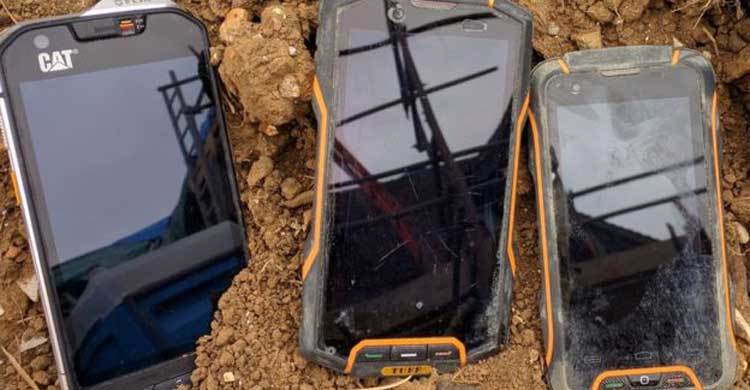Would you put your phone in a cement mixer?

British phone retailer Tuffphones has unveiled a new range of hard-wearing handsets aimed at construction workers and outdoors enthusiasts.
It’s the latest addition to a range of extra-durable Android devices in the growing market for rugged phones. The BBC took them to a building site to try them out, reports BBC.
Construction giants De Walt and Cat licence similar rugged handsets, which are subject to more rigorous testing than ordinary Smartphone’s.
Jaguar Land Rover has also announced a partnership with phone manufacturer Bullitt Group and says it intends to launch a smartphone with a ‘combination of durability and elegance’ in 2017.
However, now Chichester-based Tuffphones has made its first foray into selling its own brand, which is being manufactured in Shenzhen.
Like many of its rivals, the Tuffphone phones, which are priced between £228 and £389, come with thicker Gorilla glass screens and are certified to be dust resistant and waterproof for several minutes at a time - but none of the models operate on the latest version of Android (Marshmallow).
Security experts always recommend using the newest version of an operating system as they are usually the most secure.
The BBC tested out the 4G-enabled Tuffphone 400, priced £288, on a building site and found it could receive calls under water after several minutes of being submerged, survive a tumble in a cement mixer full of sand and could still make calls and get online after being dropped from scaffolding over 2m high.
We were advised by the retailer that it would not withstand ‘a direct blow from a hammer’.
At the end of our experiment the device screen was scratched and the handset vibrated for a few minutes - but it was also still functioning.
While many of the latest smartphones, including the Samsung S7, are also waterproof, the S7 could not receive calls while under water in our test.
Priced at £529, the Cat S60 has considerably more features, including thermal imaging functionality. It also survived both the water and sand tests but its owner was not keen on experimenting with the height drop.
‘Long tail’
The rugged phone market is forecast to account for around 18 million handset sales from a global predicted overall figure of 1.5 billion in 2016, phone analyst Ben Wood told the BBC.
‘It’s the long tail of the Smartphone market, there are so many little niche opportunities that exist and that’s where these guys are playing,’ he said. But why not just buy a durable case for an existing handset?
A rugged phone provides the convenience of an ‘all-in-one’ solution, Mr Wood said, but they have another key advantage - because they are chunkier, heavier devices, they tend to be fitted with bigger, longer-lasting batteries.
‘People want a good sustainable battery and most people when they`re using a Smartphone today find they struggle to get through the day,’ he said.
Another alternative is to buy a cheap but basic handset - although Smartphone functionality is becoming more essential for people in the industry, Mr Wood added.
‘People in construction want to have access to email, a good camera, they need to look at plans,’ he said. "They need a smarter phone, a bigger screen.’ However no phone is invincible, he added.
‘Different types of glass, different types of materials, different designs will offer you a certain amount of rugged capability but make no mistake, any device will break if you really want to break it,’ he said.


